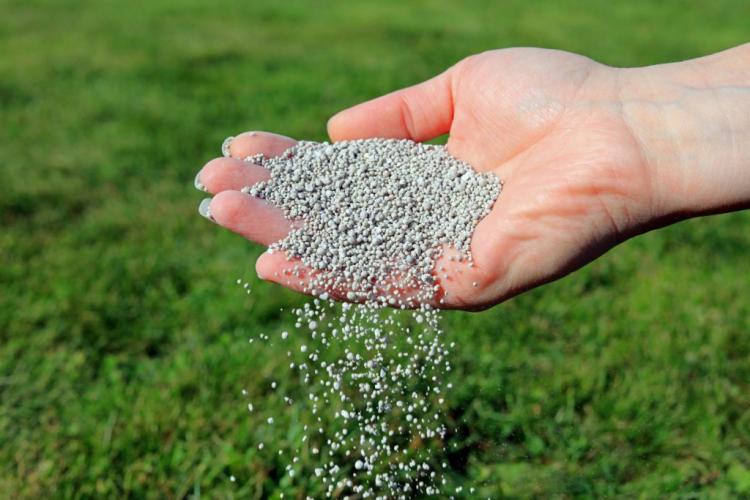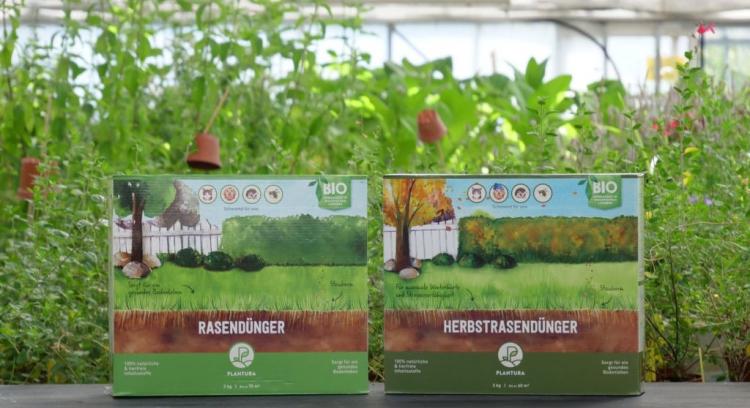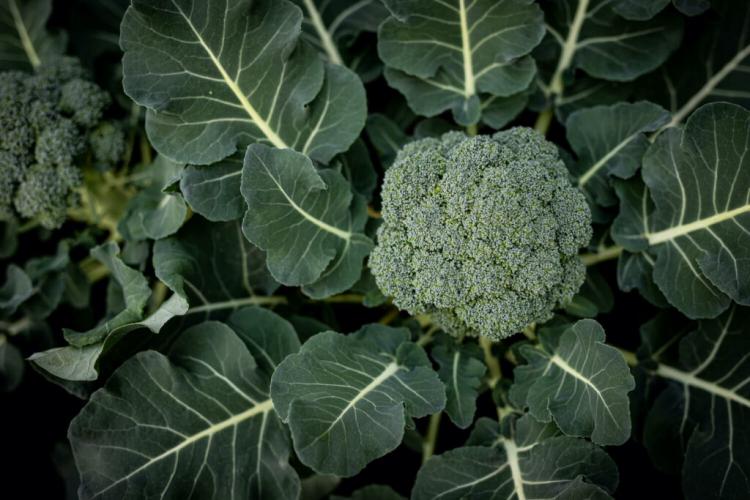Long-term lawn fertilizer: Lawn fertilizer with a long-term effect
Long-term fertilizers save you constant re-fertilization and provide the lawn with nutrients for a long time. We'll show you how to use slow release fertilizers.

The use of slow-release fertilizers reduces the effort required for a well-kept lawn [Photo: Dean Clarke / Shutterstock.com]
By using a long-term fertilizer, you have the option of extending the fertilization interval and thus reducing the amount of care required to maintain a beautiful lawn. With a little less effort, you can enjoy a dense, green and healthy lawn this way.
In this article you will learn what makes a slow release lawn fertilizer. We compare the effect, duration of action, advantages and the use of different variants of long-term fertilizers so that you can find the right fertilizer.
Lawn slow release fertilizer: what is it?
Table of Contents
Lawns are hungry for nutrients, are sensitive to deficiencies and show uneven fertilization quickly with uneven growth. A long-term lawn fertilizer releases the nutrients it contains evenly over a longer period of time. In this way, larger amounts can be fertilized at once without overfertilization damage occurring. The fertilization per year can be greatly reduced in this way. Depending on the product, the effect can last between three and six months. The actual duration of action depends not only on the ingredients, but also partly on natural influences such as moisture and warmth.
Tip: You should only refrain from long-term fertilization on extremely intensively cared-for lawns in order to be able to control the nutrient supply in minute detail and to react immediately to any occurrence. This is the case, for example, on golf turf, professional sports turf or on the finest English ornamental turf.

Long-term fertilizers should be avoided on particularly stressed lawns [Photo: Branko Jovanovic / Shutterstock.com]
Long-term lawn fertilizer: effect and duration of effect
The effect and duration of action is ultimately determined by the form of the nutrients it contains. Many fertilizers contain different components that complement each other.
- Immediately soluble, mineral fertilizer salts lead to an immediate effect that only lasts for a short time
- Encapsulated nutrient ions must first diffuse through the coating. There is a delayed, long-lasting effect.
- Special chemical compounds that have to be converted by soil organisms before they are available to the plants, behave more like organic fertilizers. This applies to urea, among others. The effect is delayed and long-lasting.
- Nutrients bound in organic “shells” can only be made available to plants by using a diverse range of soil life. Their effect is the longest-lasting and the most weather-dependent of the long-term fertilizers.
A comparison of long-term lawn fertilizers
Mineral, organic, organic-mineral and certified organic long-term lawn fertilizers differ in their properties. When it is released depends largely on the components it contains and at the same time influences the risk of over-fertilization and leaching. The presence or absence of organic matter affects the quality of the soil. In addition, all types of fertilizer also have certain special features.
| Fertilizer type | release | Incorrect fertilization | Washout | ground | Specialty |
|---|---|---|---|---|---|
| Mineral | With moisture | If used incorrectly | If used incorrectly | Reduces quality when used alone | Any urea it contains behaves like an organic component |
| Organic | With moisture, heat and biological activity | Very rare | Very rare | Increases quality | Can increase the humus content of the soil; no immediate effect |
| Mineral-organic | Partly with moisture, partly like organic | If used incorrectly | If used incorrectly | Maintains quality | Immediate and long-term effects |
| Bio | With moisture, heat and biological activity | Very rare | Very rare | Greatly increases quality | Partly contains living microorganisms to improve damaged soils |
You can also find out more about organic lawn fertilizers here.
Advantages of a long-term lawn fertilizer
As you learned above, there are different types of slow release lawn fertilizers. The following table shows the advantages of the different variants: The advantages add up from top to bottom.
| Fertilizer type | advantages |
|---|---|
| Mineral | + The workload for lawn fertilization is reduced |
| Organic-mineral | + Preservation of soil life and soil quality + Prevents leaching and over-fertilization |
| Organic | + Larger amount of organic matter for new humus structure: Increase in soil quality + Promotion of soil life + Safe for humans and animals + Leaching and over-thinning even less likely + Partly living microorganisms to revitalize a severely impoverished soil |
| Bio | + Possibly higher effective speed than organic fertilizers + Sustainably produced + Partly available animal-free |
The long-term organic lawn fertilizers also include the Plantura organic lawn fertilizers and Plantura organic autumn lawn fertilizers, which we can only recommend to you due to the undeniable advantages of organic fertilizers. Further, general information on organic fertilizers can be found here.

Our Plantura organic lawn fertilizers with long-term effects provide your lawn with the nutrients it needs
Long-term lawn fertilizer: application
We recommend a primarily organic or certified organic long-term lawn fertilizer to fertilize the lawn. Our Plantura organic lawn fertilizer is used as follows:
- 100 g / m² should be worked into the seedbed when planting a new one; After the grass has emerged and the second to third cuts, another 40 g / m² are distributed
- 80 – 120 g / m², divided into two doses, are applied annually as maintenance fertilizer
- After scarifying in spring distribute 70 g / m² for regeneration
- 50 – 80 g / m² of the potassium-accentuated autumn lawn fertilizer are distributed between July and October
Please note the following when distributing:
- The lawn should have been mowed before fertilization; A cutting height of 3.5 to 5 cm is ideal
- 200 ml correspond to 130 g of our Plantura organic lawn fertilizer: You can use measuring cups, glasses or other defined volumes for dosing
- After fertilizing, rain should follow, if necessary from a sprinkler. Otherwise the effect will be impaired.
- Uneven distribution does not lead to overfertilization, but it can cause uneven growth
- For an optimal distribution we recommend the use of fertilizer spreaders; the settings of common fertilizer spreaders are indicated on the Plantura organic lawn fertilizers
- In the case of manual distribution, the distribution on the surfaces is done broadly, the edges are reworked. If there is still a large amount of the calculated demand left after distribution, you can distribute this remainder equally over the entire area.
- After fertilization, the lawn can be used again immediately
You can find more information about the various lawn fertilizers here.
You can also find out everything else about “fertilizing the lawn” here in our overview article.






